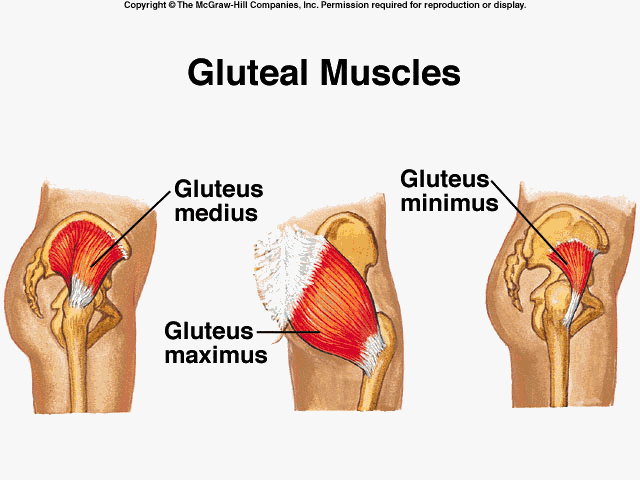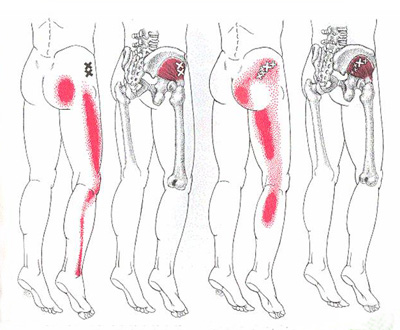|


Gluteus Medius Minimus Syndrome
Body parts don't give up when they're overworked or tired, so much as they just keep working until they give out. The gluteus medius and minimus muscles in the buttocks are no exception. When overworked, these muscles react by becoming tight, going into a constant state of contraction in order to perform their job, similar to a student staying awake all night to cram for an exam.
Eventually, however, the work catches up. They become exhausted and can't perform as well, or become limited in what they can do. When this happens, people can develop gluteus medius muscle syndrome or gluteus minimus muscle syndrome. Because the two muscles are so anatomically and functionally related, healthcare practitioners often refer to either syndrome as gluteus medius/minimus muscle syndrome.
People with this syndrome often describe their pain as a deep, dull ache in the buttock that often radiates to other areas of the body. Rest or activity doesn't determine the level of this pain, however. Instead, people with the syndrome often feel the most pain when they're startled or make sudden movements.
A number of things can cause or contribute to tight gluteus medius or gluteus minimus muscles. Muscle imbalances, poor posture and poor spinal or foot mechanics can be a factor, as can anything that overworks the muscles. When overworked, the muscles develop minor strains, which causes an inflammatory response. This inflammation is what causes the pain.
Because excess work can cause the syndrome, it's very common among runners, who use these muscles extensively. But runners aren't the only people susceptible, as generally anyone who is active and overuses their gluteus muscles can be affected. For this reason, it's important for people with gluteus medius/minimus syndrome to avoid activities that put pressure on the gluteus muscles until their healthcare practitioner says it's okay.
But inactivity isn't the answer either. To care for gluteus medius/minimus syndrome, your healthcare practitioner may recommend a treatment plan to help relieve tight muscles. Regular rehabilitative exercises are important.
กก
Treatment
This problem can be treated with
acupuncture/massage. According to Chinese medicine, this condition is caused by
the stagnation of qi and blood flow in gluteus medius/minumus after the muscles
are overused. The blockage causes pain which may be localized in the buttock or
radiating down the leg. But there are no signs of never roots invovlement.
Acupuncture can stimulate the muscles to induce the relation while it improve
the blood circulation as well. Acupuncture needles are inserted into A-Shi
points ( trigger points) where the knots are. Needle manipulations are important
to induce Qi-feeling. But the needles should NOT be twisted much or it may cause
more pain or muscle damage since the muscles are very tight and already
inflamed. Massage should also be gentle too, except when point pressure is
applied.
Heat pad may help relieve the pain and give
some comfort in the area. Make sure you don't use heat over 50 degrees Celsius.
If the gluteus/minimus problem is acute, don't use heat at all (it may aggravate
the blood congestion).
Anti-inflammatories may help ease the pain
and reduce the inflammation, but some people don't see any improvement at all.
Nerve blocking injection may also be used to treat the problem.
กก
กก |